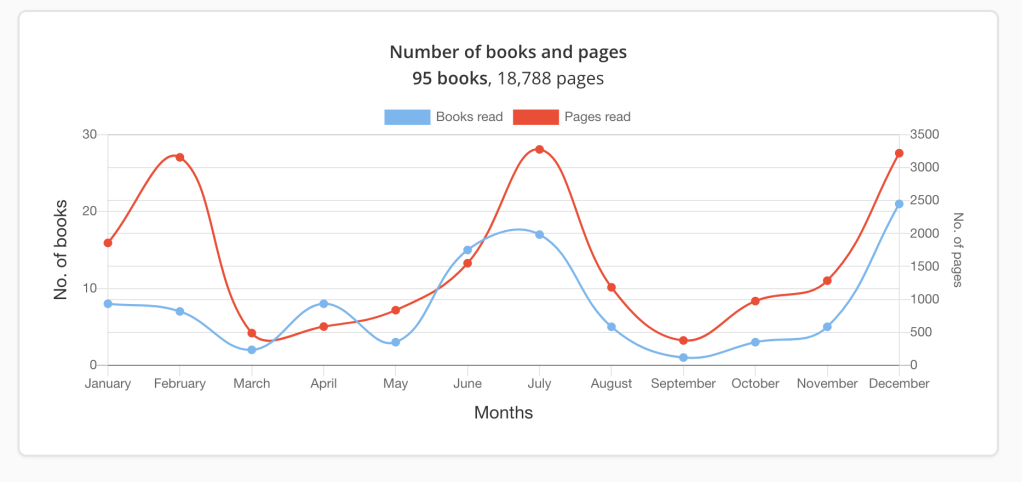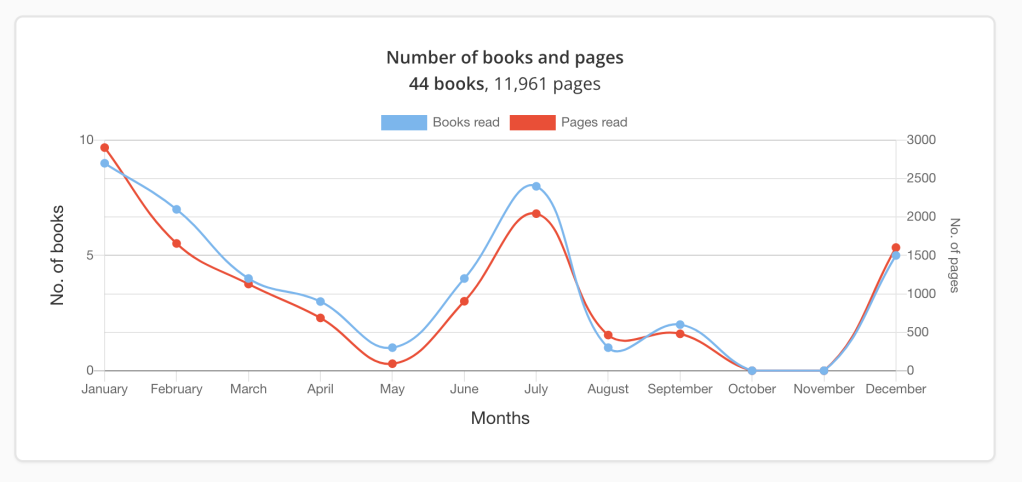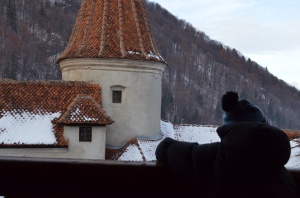Books I Read in 2021, Part 1
by kipress
Jeesh, January will be over soon, so I better get on my annual blog post!
After a miserably light reading year in 2020, I was determined to make 95 books in 2021, but I could see right away that it would be an issue given how exhausted I was between pandemic-work, pandemic-family, and pandemic-buying-and-selling-houses-and-moving. So I decided early on that I’d also read, and count, chapbooks in my total. So, I only sort of read 95 books—and I barely made it even so.
I also set a “page goal” in the app I’m using – The StoryGraph – just so I could see how close I was to reading an “average” 200-page book. I didn’t quite make the page count, but it was close. On average, a “book” for me was just under 200 pages. Not bad considering all the chapbooks of less than 20 pages I read! There were a few doozies in there that balanced it out.
Check out this neat graph you can get on The StoryGraph:

It’s my reading pattern for the year! You’ll note the same general pattern in 2020, although with thousands fewer pages:

What are those dips and rises? The dips are the school term. The rises are summer and Christmas breaks.
Without further ado (have I written this like a recipe blogger?), here are my most memorable books of 2021! It was hard to choose this year, so I went long with a list of 10 – well, 11, because I couldn’t decide between the Patti Smith books. Remember that my list is whimsical and reflects how the mood strikes me as I write this. It’s not a best-of!
Some close runners-up that I won’t talk about: The Baudelaire Fractal by Lisa Robertson; Disorientation: Being Black in the World by Ian Williams; The Lightning of Possible Storms by Jonathan Ball; Here the Dark by David Bergen; Heteroskeptical by Marcus McCann; The Talented Mr. Ripley by Patricia Highsmith; The City We Became by N.K. Jemisin; St. Mary at Main by Patrick Friesen; The Perfect Nanny by Leila Slimani.
Dracula by Bram Stoker
I had never read this before, and I read it aloud to my daughter over a period of months. We laughed a lot at how obtuse the characters are, how they really needed to treat Mina with more respect, and, especially, at how much Van Helsing talks in his semi-comprehensible babble. All and all well worth reading to see what all the fuss is about. We especially appreciated all the Transylvanian landscape and people, having been there a few years ago and visited one of the castles purported to be related to the Dracula legend (my vacation photo below).

The Centaur’s Wife by Amanda Leduc
A good companion piece to her also excellent nonfiction book Disfigured: On Fairy Tales, Disability, and Making Space (which I also read this year), Leduc has written a fairy-tale-esque novel centring on human characters with disabilities and fantastic characters with nonhuman qualities, all set in a world where the earth itself is consciously taking revenge on humanity. What sticks in my mind most is the harrowing mid-point climax (which I won’t give away…).
Klara and the Sun by Kazuo Ishiguro
You know I’ve been teaching basic story structure too long when I keep getting excited about mid-point climaxes. Klara and the Sun is a quiet book with a strangely meditative quality stemming from the voice of its narrator, Klara, an android programmed to be devoted to a lonely human teenager. I was hit hard by the quiet but central reveal about her host family’s motivations. I didn’t like this book as much as my favourite Ishiguro (Never Let me Go, which I’m guessing is a lot of peoples’ favourite), but this was a satisfyingly Ish-y experience.
More memorable books in another post soon!